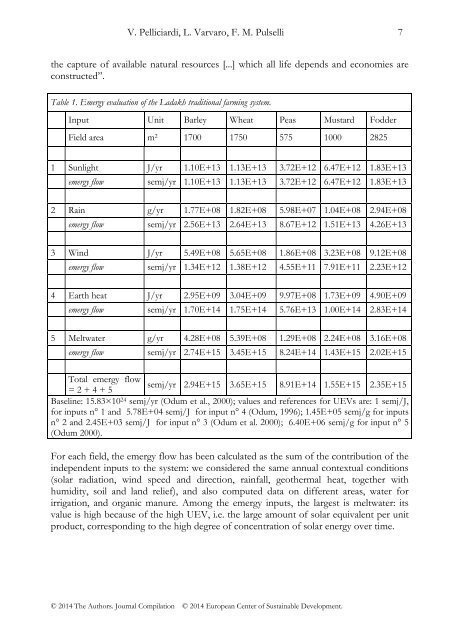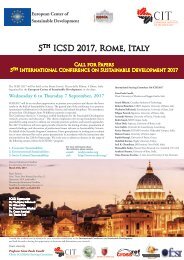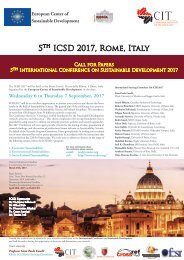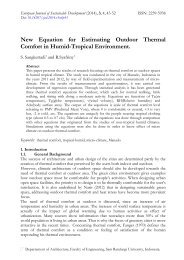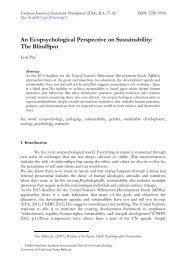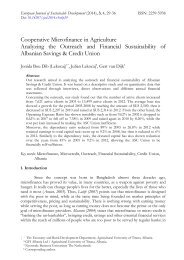Emergy evaluation of a traditional farming system. Case study: Leh District (Ladakh - Indian Trans-Himalaya)
Ladakh traditional farming system has been included on the F.A.O. list of possible “Globally Important Agricultural Heritage Systems”, worthy of being preserved and conserved. The paper describes and assesses cultivation practices in a typical familymanaged farm, located in central Ladakh, analysing how natural resources are exploited, conserved and recycled. Emergy evaluation, an environmental accounting methodology, has been applied to evaluate and compare five staple crop productions: barley, wheat, pea, mustard, and fodder alfalfa. Unit Emergy Values of products (UEV, emergy per unit product, a measure of the environmental production cost) are calculated, taking into account the inputs to production such as water from glaciers, soil fertility, human and animal labour, and more. Results show that the traditional agricultural practices in Ladakh, completely supported by renewable flows, are efficient in the use of local resources. In fact, the UEVs of agroproducts are similar to those of analogous products of conventional agriculture (e.g. 5.27E+05 and 6.64E+05 semj/J for barley and wheat in Ladakh, respectively; 7.37E+05 semj/J for corn in USA), though the inputs of Ladakh agriculture are strongly limited in type and quantity. At the same time, local farmers can create, maintain and rebuild soil functions whose UEV is 1.62E+07 semj/J. Keywords: Ladakh, agrosystem, emergy, environment, sustainability
Ladakh traditional farming system has been included on the F.A.O. list of possible “Globally Important Agricultural Heritage Systems”, worthy of being preserved and
conserved. The paper describes and assesses cultivation practices in a typical familymanaged farm, located in central Ladakh, analysing how natural resources are exploited, conserved and recycled. Emergy evaluation, an environmental accounting methodology, has been applied to evaluate and compare five staple crop productions: barley, wheat, pea, mustard, and fodder alfalfa. Unit Emergy Values of products (UEV, emergy per unit product, a measure of the environmental production cost) are calculated, taking into account the inputs to production such as water from glaciers, soil fertility, human and
animal labour, and more. Results show that the traditional agricultural practices in Ladakh,
completely supported by renewable flows, are efficient in the use of local resources. In fact, the UEVs of agroproducts are similar to those of analogous products of conventional agriculture (e.g. 5.27E+05 and 6.64E+05 semj/J for barley and wheat in Ladakh, respectively; 7.37E+05 semj/J for corn in USA), though the inputs of Ladakh agriculture are strongly limited in type and quantity. At the same time, local farmers can create, maintain and rebuild soil functions whose UEV is 1.62E+07 semj/J.
Keywords: Ladakh, agrosystem, emergy, environment, sustainability
Create successful ePaper yourself
Turn your PDF publications into a flip-book with our unique Google optimized e-Paper software.
V. Pelliciardi, L. Varvaro, F. M. Pulselli 7<br />
the capture <strong>of</strong> available natural resources [...] which all life depends and economies are<br />
constructed”.<br />
Table 1. <strong>Emergy</strong> <strong>evaluation</strong> <strong>of</strong> the <strong>Ladakh</strong> <strong>traditional</strong> <strong>farming</strong> <strong>system</strong>.<br />
Input Unit Barley Wheat Peas Mustard Fodder<br />
Field area m 2 1700 1750 575 1000 2825<br />
1 Sunlight J/yr 1.10E+13 1.13E+13 3.72E+12 6.47E+12 1.83E+13<br />
emergy flow semj/yr 1.10E+13 1.13E+13 3.72E+12 6.47E+12 1.83E+13<br />
2 Rain g/yr 1.77E+08 1.82E+08 5.98E+07 1.04E+08 2.94E+08<br />
emergy flow semj/yr 2.56E+13 2.64E+13 8.67E+12 1.51E+13 4.26E+13<br />
3 Wind J/yr 5.49E+08 5.65E+08 1.86E+08 3.23E+08 9.12E+08<br />
emergy flow semj/yr 1.34E+12 1.38E+12 4.55E+11 7.91E+11 2.23E+12<br />
4 Earth heat J/yr 2.95E+09 3.04E+09 9.97E+08 1.73E+09 4.90E+09<br />
emergy flow semj/yr 1.70E+14 1.75E+14 5.76E+13 1.00E+14 2.83E+14<br />
5 Meltwater g/yr 4.28E+08 5.39E+08 1.29E+08 2.24E+08 3.16E+08<br />
emergy flow semj/yr 2.74E+15 3.45E+15 8.24E+14 1.43E+15 2.02E+15<br />
Total emergy flow<br />
semj/yr 2.94E+15 3.65E+15 8.91E+14 1.55E+15 2.35E+15<br />
= 2 + 4 + 5<br />
Baseline: 15.83×10 24 semj/yr (Odum et al., 2000); values and references for UEVs are: 1 semj/J,<br />
for inputs n° 1 and 5.78E+04 semj/J for input n° 4 (Odum, 1996); 1.45E+05 semj/g for inputs<br />
n° 2 and 2.45E+03 semj/J for input n° 3 (Odum et al. 2000); 6.40E+06 semj/g for input n° 5<br />
(Odum 2000).<br />
For each field, the emergy flow has been calculated as the sum <strong>of</strong> the contribution <strong>of</strong> the<br />
independent inputs to the <strong>system</strong>: we considered the same annual contextual conditions<br />
(solar radiation, wind speed and direction, rainfall, geothermal heat, together with<br />
humidity, soil and land relief), and also computed data on different areas, water for<br />
irrigation, and organic manure. Among the emergy inputs, the largest is meltwater: its<br />
value is high because <strong>of</strong> the high UEV, i.e. the large amount <strong>of</strong> solar equivalent per unit<br />
product, corresponding to the high degree <strong>of</strong> concentration <strong>of</strong> solar energy over time.<br />
© 2014 The Authors. Journal Compilation © 2014 European Center <strong>of</strong> Sustainable Development.


